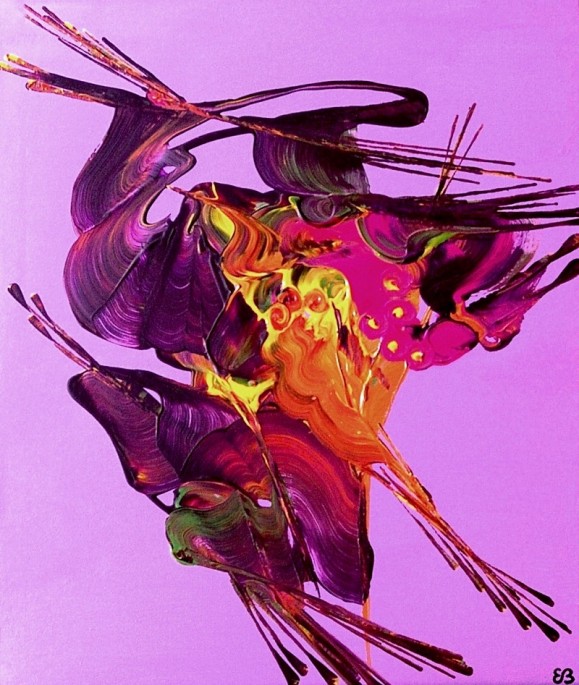Torero, King of The Arena
Technical Details
Supporting Medium : Stretched canvas
Actual Size : 50 x 61 cm
Ref. number : D-43
Copyright : EB-00046741
One-of-a-kind Artwork
Status : Private Collection

WITH THIS PAINTING, CREATE A WORLD OF YOUR OWN!
>>> Discover more ideas to decorate your home!
ZOOM...

The story behind

In this painting, colors whirl in purple, red, and gold, swept into a dance of fire and blood. At first glance, one sees the blazing silhouette of a bullfighter, proud, wrapped in his suit of lights, swirling his muleta with the assurance of a king in his arena. The gesture seems noble, the scene almost festive, crowned with golden sparks and the intoxication of combat. Yet when the canvas is turned, the mask tears away: no longer a hero, but a jackal appears, serpent-tongued, an Anubis-like figure entangled in crimson shrouds. The arena shifts into a descent, a fall into shadow, revealing the hidden face of this supposed glory: death made spectacle. Here, colors become language: violet calls for reverence for life, red denounces violence, pink exposes the blindness of tradition, green hints at mortality, and gold unveils the unheeded knowledge of good and evil. This canvas questions: who is truly the animal in the arena? The one forced to fight for survival—or the one who kills, believing it to be triumph?
Your comments on this work









 Useful Information
Useful Information



 Copyrights
Copyrights







 All contents on this website are protected by copyrights in France and 179 other countries. Even partial reproduction is strictly forbidden.
All contents on this website are protected by copyrights in France and 179 other countries. Even partial reproduction is strictly forbidden.



